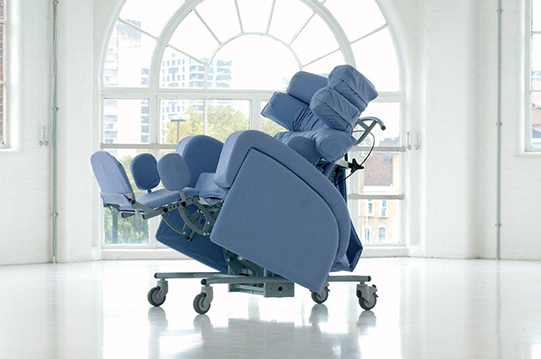

Specialist seating is all about positioning, alignment and pressure care. Considering aspects such as skin health and integrity, maximising user function, accommodating postural asymmetries and introducing postural alignment, will, in turn, increase comfort, decrease fatigue, and assist with breathing and digestion for the user of the seating.
The aim of specialist seating is to provide stability to the end user. Good positioning provides stability, stability provides comfort, and comfort delivers an increase in health and wellbeing. All of which leads to healing and a better quality of life.
Examples of when Specialist Seating becomes a need:
These needs may cause a person to be seated for longer periods of time which inevitably has repercussions on the body. The specific needs of a person or patient can be identified through a thorough assessment. These requirements, based on the outcome of the assessment, can then be translated to create the specification of a suitable chair system.
Posture Care
Correct musculoskeletal posture minimises strain on the spine and ensures minimum input from the muscle is required for the body to remain in alignment. An even distribution of weight throughout the body is essential to achieve this. Common postural issues for service users can include pelvic tilting, pelvic rotation or excessive curving of the spine; and slumping of the shoulders. These problems can cause chronic pain and discomfort and be worsening for mobility issues. This, in turn, has been shown to sometimes lead to fatigue and depression.
Pressure care
Pressure pain and ulcers can result from poor posture as uneven weight distribution limits blood flow to compressed areas. This can cause damage to the deeper tissue before being noticeable on the outer layer of skin. By the time pressure sores are apparent, these deeper injuries can become problematic and can be vulnerable to infection. Once affected, the area is often weakened and vulnerable to repeated damage. It is important, therefore, to be vigilant for the presence or possibility of ulceration, with prevention being the aim when considering pressure care.
There are areas of the body which are more at risk of pressure damage, these include the sacrum, the backs of the knees, parts of the spine, shoulder blades and, in some cases, the back of the head. These sites should be considered when selecting seating to ensure damage is avoided.
To fulfill a wide variety of seating needs, variations can be made in the dimensions of the seat, the height, shape, and angle of the back of the chair; and the shape and level of the armrests. Due to these many variations, a skilled advisor is essential to the selection process to match the individual service user to the most suitable model. We employ a team of experienced advisers to assist in seating selection for the expanse of varied specialist seating requirements and carry an excellent range of well-established seating and care products.
You can book an assessment or contact us for an informal chat with one of our experts to help significantly improve the long-term health and quality of life for a family member, friend or patient in need.